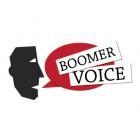This week I’m going to share a couple of my newest finds. They are still in Beta, but they are funded and appear headed for wide spread use—hopefully soon.
This week I’m going to share a couple of my newest finds. They are still in Beta, but they are funded and appear headed for wide spread use—hopefully soon.
This is one of the best, most complete and easy to understand telemedicine sites I’ve seen. It is in infancy, but has great potential. It’s available on computer and on IOS and Android mobile. Patients begin by enrolling, selecting a doctor, and then seeing a doctor over a web cam. Typical visits are 10 minutes for $49.
The site offers a list of doctors licensed in 44 states (their credentials are all visible). Patients can submit their bills to their own insurance companies. Insurance coverage for telemedicine varies by payer and by state.
The ability for physicians to prescribe drugs through telemedicine is inching toward reality according to the Center for Telehealth & e-health Law (CTel). This method of medicine is sure to be a winner for Boomers with recurring minor conditions, those who travel and those who are in remote areas.
This app offers hospital discharge nurses the ability to record discharge instructions for patients to use through their smartphones or iPods. Created by ExperiaHealth, now part of Vocera, Good to Go is now being used at the Cullman Regional Medical Center (CRMC), in Cullman, AL.
According to Cheryl Bailey, BSN, MBA and Vice President of Patient Care Services at CRMC, Good to Go has resulted in a 15% reduction in hospital readmission rates for users.
First, the discharge instructions are recorded at the patient’s bedside using a HIPPA/HITECH compliant application on an IOS device. It’s then transferred to the Good to Go website.
“After the discharge session, the nurse asks the patient to listen to the captured conversation and clarify any confusion,” Bailey explained. “Patients and their caregivers are then able to access the instructions, as well as educational videos, photos and documents, from home via a mobile device, personal computer or landline phone.”
This website is designed by the San Francisco-based developer of credit card comparison and personal finance web resources. It has recently introduced a mobile tool for users to compare hospital procedure prices and ratings.
The application is separated into three sections. By entering a hospital treatment or procedure and location, a user can research the Lowest Price Tag (the hospital with the lowest charge master price in the selected region), the Most Experienced (the hospital providing the most of this type of treatment in a year) and the Most Recommended (the hospital with the highest patient satisfaction rating).
The data is culled from the May 2013 prices published by the Centers for Medicare and Medicaid Services of the 100 most common inpatient procedures.
Nerd Wallet Health is a finalist is the Robert Wood Johnson Hospital Price Transparency Challenge. The winner will be selected at the mhealth Summit at its annual convention in the Washington D.C. area in early December.
This app is going to give patients even more control of their health care spending by removing hospitals’ pricing cloaks.
While all of these applications offer great promise to the 50+ market, they won’t help our group if we don’t know about them. Presently there are other good health care devices in the marketplace, but they aren’t speaking to Boomers.
Healthcare technology isn’t a “build it and they will come” platform for Boomers. Communicating the advantages to this cohort takes a targeted, mature and emotional approach.

